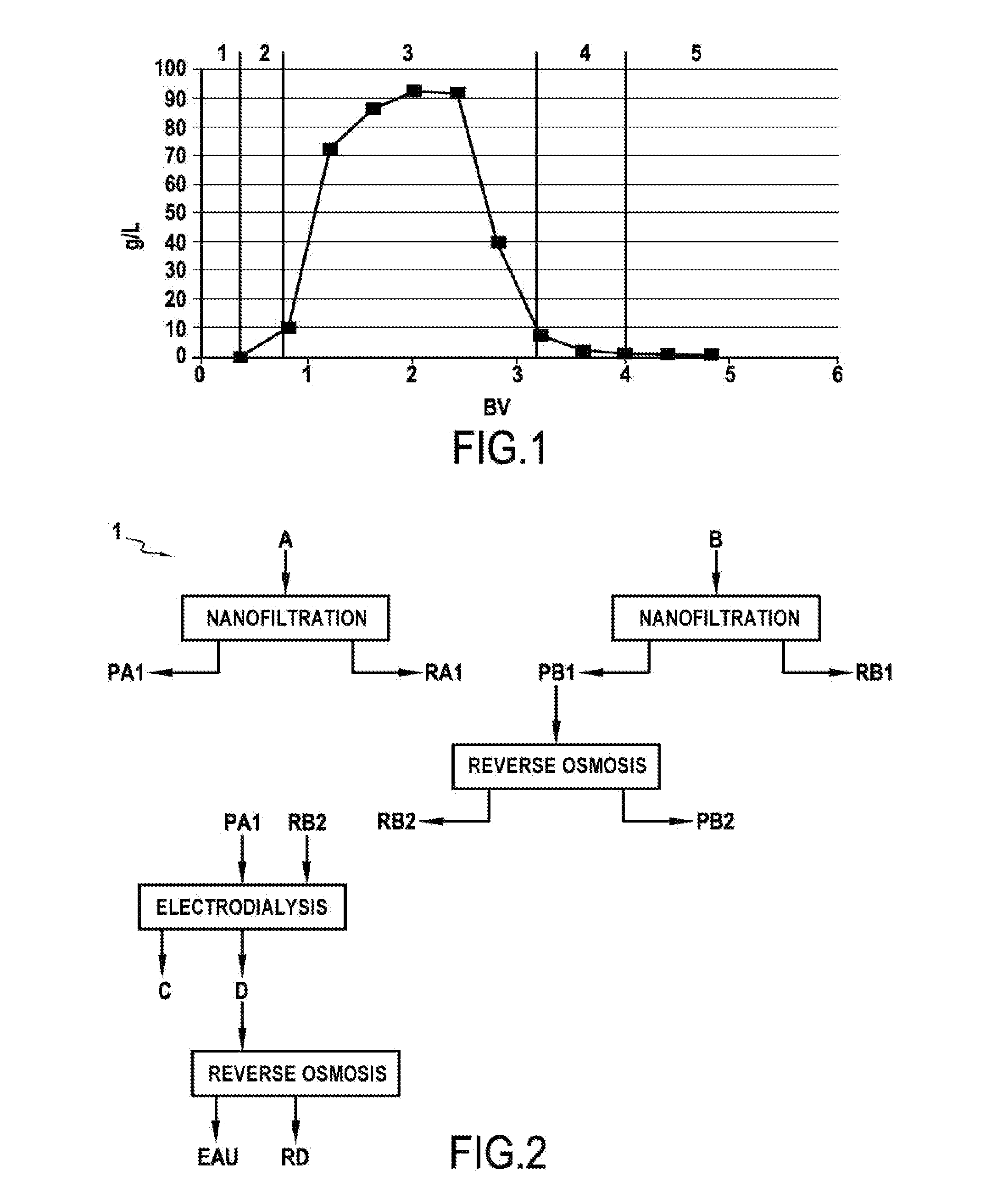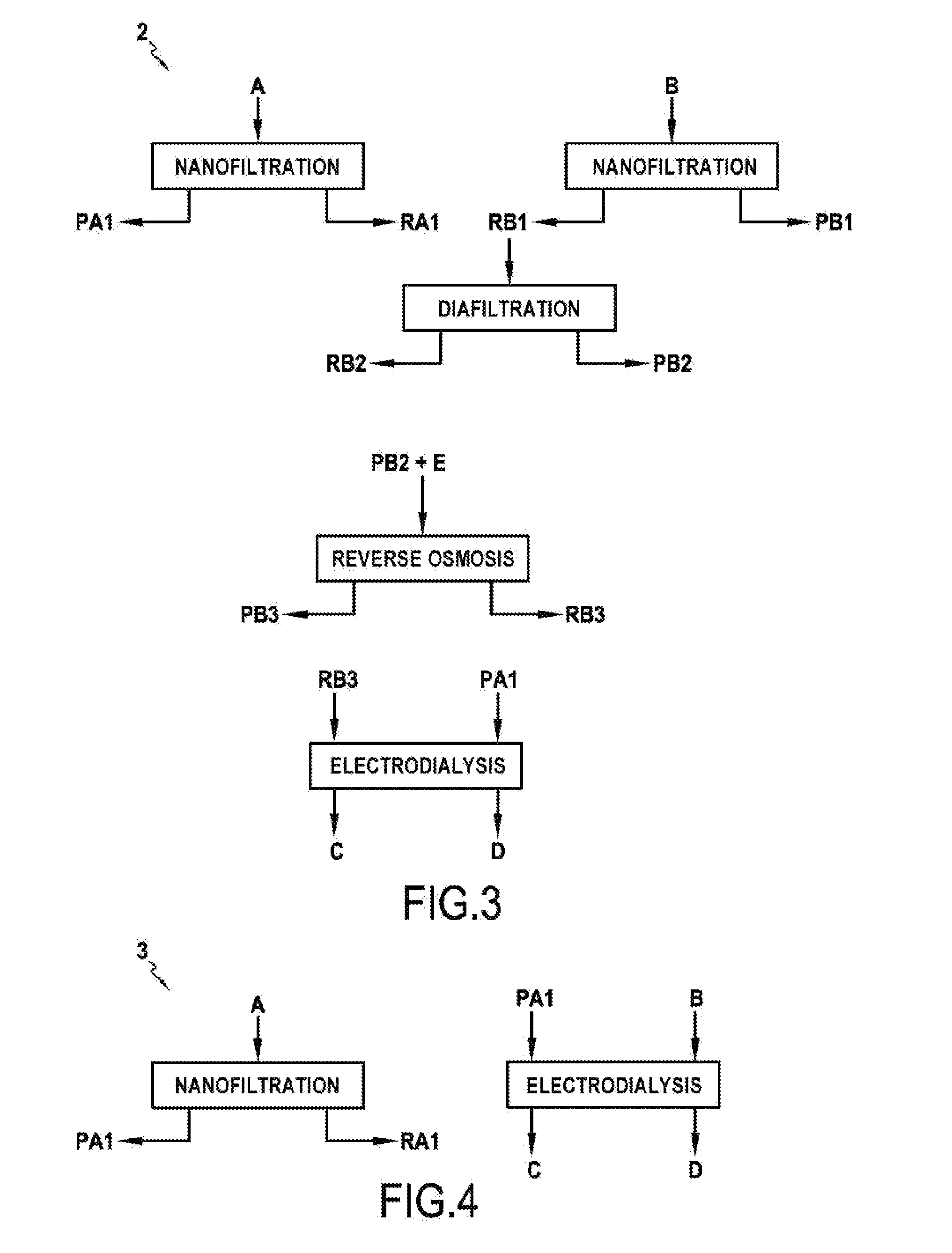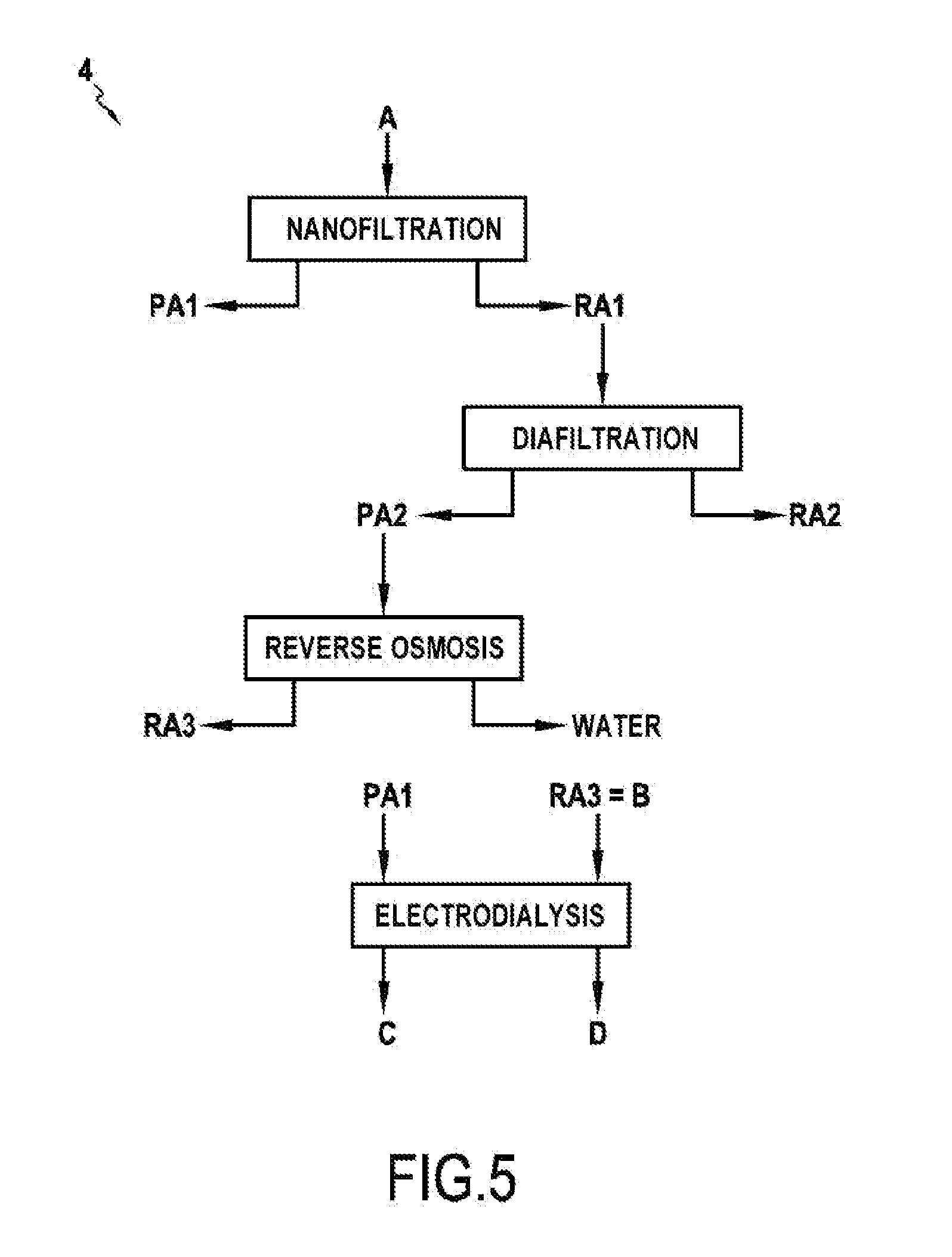Method for recirculating a reprocessing effluent comprising chloride ions
a technology of chloride ions and effluent, which is applied in the direction of ion exchangers, water contaminants, waste water treatment from plant processing, etc., can solve the problems of large fraction of reprocessing effluent comprising a low concentration of chloride ions, is not possible to directly recover a reprocessing brine ready, and is highly polluting. , to achieve the effect of minimizing the cost of the different recycling steps
- Summary
- Abstract
- Description
- Claims
- Application Information
AI Technical Summary
Benefits of technology
Problems solved by technology
Method used
Image
Examples
Embodiment Construction
[0085]FIG. 1 illustrates the elution profile upon leaving the column, upon reprocessing. About 80% to 90% of the salt of the eluates or fractions are found in a volume corresponding to the volume required for reprocessing but with a salt titer of the order of 80 g / l, which corresponds to fraction no. 3. 10 to 20% of the salt of the eluates are found in the diluted fraction before and after this peak, which corresponds to the fractions no. 2 and no. 4.
[0086]The six exemplary methods according to the invention are applied on a reprocessing effluent used following the discoloration of a solution of brown sugar, at 60 brix, which was discolored from 800 icumsa to 90 icumsa while passing through a column containing 30 L of anionic resin, of the FPA90 type from Röhm & Haas. The working temperature is 80° C. and the throughput is 60 liter / hour. The resin, saturated with coloring agents, was reprocessed under hot conditions (80° C.) by passing a salt solution at 100 g / l for which the pH was...
PUM
| Property | Measurement | Unit |
|---|---|---|
| concentration | aaaaa | aaaaa |
| concentration | aaaaa | aaaaa |
| concentration | aaaaa | aaaaa |
Abstract
Description
Claims
Application Information
 Login to View More
Login to View More - R&D
- Intellectual Property
- Life Sciences
- Materials
- Tech Scout
- Unparalleled Data Quality
- Higher Quality Content
- 60% Fewer Hallucinations
Browse by: Latest US Patents, China's latest patents, Technical Efficacy Thesaurus, Application Domain, Technology Topic, Popular Technical Reports.
© 2025 PatSnap. All rights reserved.Legal|Privacy policy|Modern Slavery Act Transparency Statement|Sitemap|About US| Contact US: help@patsnap.com



